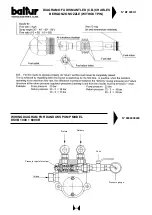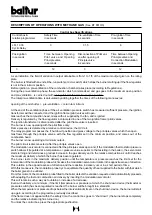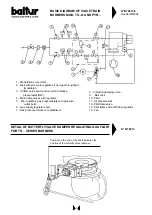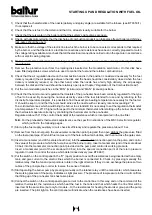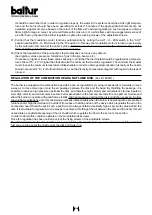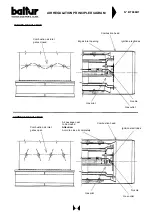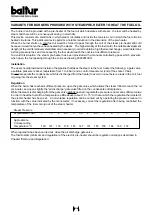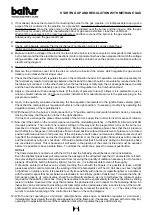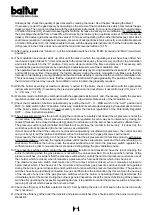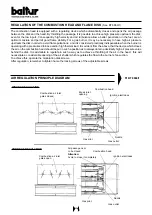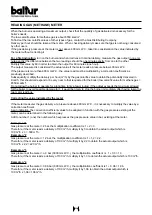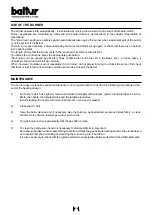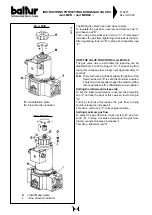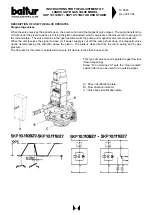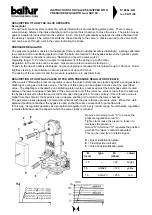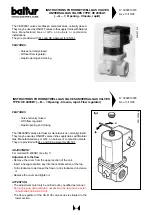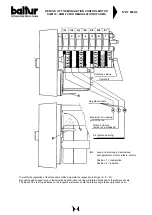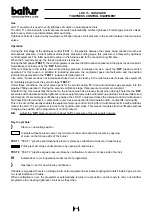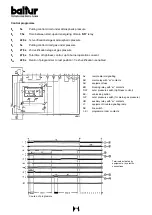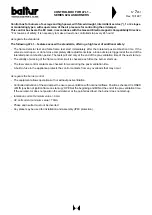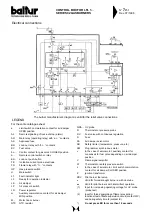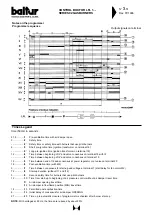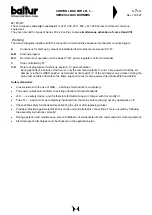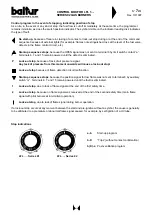
26
READING GAS (METHANE) METER
When the burner is operating at maximum output, check that the quantity of gas delivered is necessary for the
boiler’s needs.
The low calorific value for methane gas is about 8550 kcal/m
3
.
To find out the low calorific values of other types of gas, contact the Gas Distributing Company.
Delivery per hour should be taken at the meter. When checking delivery make sure that gas is not being consumed
by other users.
If the gas delivery pressure at the meter is not above 400 mm.W.C., take into consideration the value indicated by
the meter without correcting it.
For a first indication, turn on the burner and when it arrives at nominal delivery, measure the gas output in one mi-
nute exactly (the difference between the two readings should be one minute exactly from one to the other.
Multiply this value by 60 in order to obtain the output for 60 minutes (one hour).
The output measured is considered the actual value if the meter reads a pressure below 400 mm.W.C.
If the pressure is more than 400 mm.W.C., the value read must be multiplied by a correction coefficient, as
previously described.
Subsequently, multiply the delivery per hour (m
3
/h) by the gas calorific value to obtain the potentiality delivered in
Kcal/h; this should correspond or be very near to that requested for the boiler (low calorific value for methane gas =
8550 kcal/m
3
).
Do not allow the burner to operate for a long time (only a few minutes) if the output exceeds the maximum allowed
for the boiler, to avoid possible damage to it; it would be timely to stop the burner immediately after having taken the
two meter readings.
Correcting the value indicated by the meter
If the meter measurer the gas delivery at a pressure above 400 mm.W.C., it is necessary to multiply the value by a
correction coefficient.
As an indication, the correction coefficient values to be adopted in function with the gas pressure existing at the
meter, can be determined in the following way:
Add to number 1 (one) the number which expresses the gas pressure value in bar, existing at the meter.
Example n° 1
Gas pressure at the meter = 2 bar, the multiplication coefficient is 1 + 2 = 3.
Therefore, if the meter reads a delivery of 100 m
3
/h, multiply it by 3 to obtain the actual output which is
100 m
3
/h x 3 = 300 m
3
/h.
Example n° 2
Gas pressure at the meter = 1,2 bar, the multiplication coefficient is 1 + 1,2 = 2,2.
Therefore, if the meter reads a delivery of 100 m
3
/h, multiply it by 2,2 to obtain the actual output which is
100 m
3
/h x 2,2 = 220 m
3
/h.
Example n° 3
Gas pressure at the meter = o,3 bar (3000 mm.W.C.), the multiplication coefficient is 1 + 0,3 = 1,3.
Therefore, if the meter reads a delivery of 100 m
3
/h, multiply it by 1,3 to obtain the actual output which is 130 m
3
/h.
Example n° 4
Gas pressure at the meter = 0,06 bar (600 mm.W.C.), the multiplication coefficient is 1 + 0,06 = 1,06.
Therefore, if the meter reads a delivery of 100 m
3
/h, multiply it by 1,06 to obtain the actual output which is
100 m
3
/h x 1,06 = 106 m
3
/h.
Содержание TS 0 GN
Страница 2: ......
Страница 47: ......
Страница 48: ......
Страница 49: ......
Страница 50: ......
Страница 51: ......
Страница 52: ......
Страница 53: ......
Страница 54: ......
Страница 55: ......
Страница 56: ......
Страница 57: ......
Страница 58: ......
Страница 59: ......
Страница 60: ......
Страница 61: ......
Страница 62: ......
Страница 63: ......
Страница 64: ......
Страница 65: ......
Страница 66: ......
Страница 67: ......
Страница 68: ......
Страница 69: ......
Страница 70: ......
Страница 71: ......
Страница 72: ......
Страница 73: ......
Страница 74: ......
Страница 75: ......
Страница 76: ......
Страница 77: ......
Страница 78: ......
Страница 79: ......
Страница 80: ......
Страница 81: ......
Страница 82: ......
Страница 83: ......
Страница 84: ......
Страница 85: ......
Страница 86: ......
Страница 87: ......
Страница 88: ......
Страница 89: ......
Страница 90: ......
Страница 91: ......
Страница 92: ......
Страница 93: ......
Страница 94: ......
Страница 95: ......




